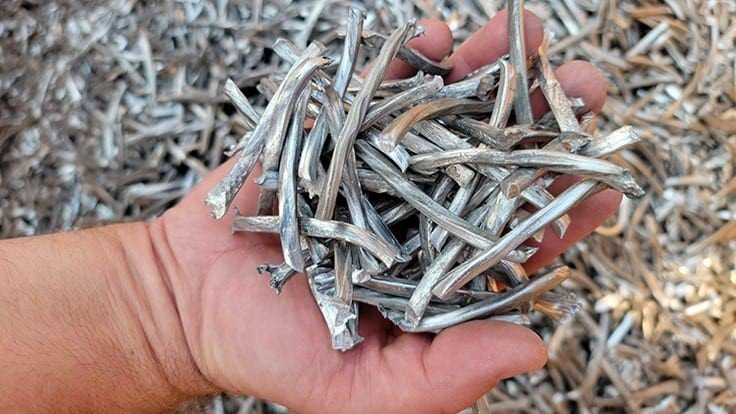Shifts in cable processing capacity ongoing
As seen in Recycling Today magazine
Equipment and technology provider SWEED Machinery reports a ready market for its processing machinery, abetted by lofty copper and aluminum prices.

Scrap wire and cable is not traveling across the ocean as much as it used to, largely because governments in several nations became concerned about the amount of landfill-bound material attached to the copper and aluminum scrap within.
The changing export circumstances, combined with upward bound pricing for copper and aluminum, have led to vigorous interest in expanded wire processing capacity in scrap surplus nations in North America and Europe.
United States-based SWEED Machinery, a designer and manufacturer of wire and cable processing technology and equipment, says its business activity has risen along with the price of metals and restrictions on wire scrap trading imposed by some nations that formerly imported the material.
“We relate a portion of the overall increase in quote request volume to changes in the export market,” says Christopher Simon, who is in charge of recycling systems sales for the company. “More customers understand they must process their wire packages prior to export. There are fewer options to export wire bales,” he adds.
Melissa Tally, marketing manager for SWEED, says that while processors at firms in scrap surplus nations such as the United States might have thought of import limitations imposed by other nations as “a setback initially, it has actually provided North American processors with new opportunities.”
She adds, “Scrap dealers who may have previously exported their baled scrap are now preparing it first and taking advantage of the higher aluminum prices. In the past two years, SWEED has seen a 74 percent increase in inquiries” for its ACSR (aluminum cable-steel reinforced) equipment line.
Tally says 77 percent of those inquiries were from North America. “These inquiries were solely for our linear ACSR system and don’t even include the companies processing ACSR with bulk mixed materials in wire chopping lines. The interest is strong.”
Processors in developed nations in Europe and North America keep a close eye on the profitability of extracting copper and aluminum from scrap wire and cable in their own plants versus baling it to ship overseas. The critical factor can involve the percentage of metal included in the wire.
Simon says, “We are not aware of a specific copper content percentage overall [desired by recyclers], but we see two related trends. One, lower quality material can have a better margin due to the already high buy price for baled high-grade wire. Two, volume and consistency can justify running low-copper content materials.”
SWEED and other equipment producers offer a variety of equipment to help scrap processors boost their in-house capabilities to separate the metal interiors of wire and cable scrap from the plastic coatings on the outside.
Processors might need despooling equipment before they get to the chopping stage, Simon and Tally say. “We despool the ACSR with our 5703 XHD scrap chopper, and our magnetic inline belt (MIB) conveyor separates the steel from the aluminum,” Tally says of technology offered by SWEED.
The company also makes equipment designed to handle baled material, Simon adds. “When our customers need to process whole bales, we offer our dual-shear, slow-speed, high-toque shredders that easily process entire bales.”
Tally says manufacturers increasingly seek to offer systems that can convert lower metals-content wire scrap into high-purity melt shop feedstock. “Depending on space requirements, SWEED’s inline ACSR system can be coupled with a high-intensity rare earth magnet secondary pass system taking product purity to 99.99 percent.”
Tally adds, “This ensures the end product is virtually free of ferrous material that may downgrade and prevent it from selling at optimal market value. The beauty of SWEED’s ACSR system is that it can be configured as a stationary, mobile or skidded system, or even integrated into a full wire chopping line, depending on the customer’s need.”
With metals prices remaining lofty, Simon says he sees the path forward for wire processing systems remaining wide open, especially for processors with a consistent inbound flow of materials. “Due to chemistry characteristics, if a customer has a lot of the same type of low-copper wire, this consistency can increase the finished product value and justify processing,” he remarks.

